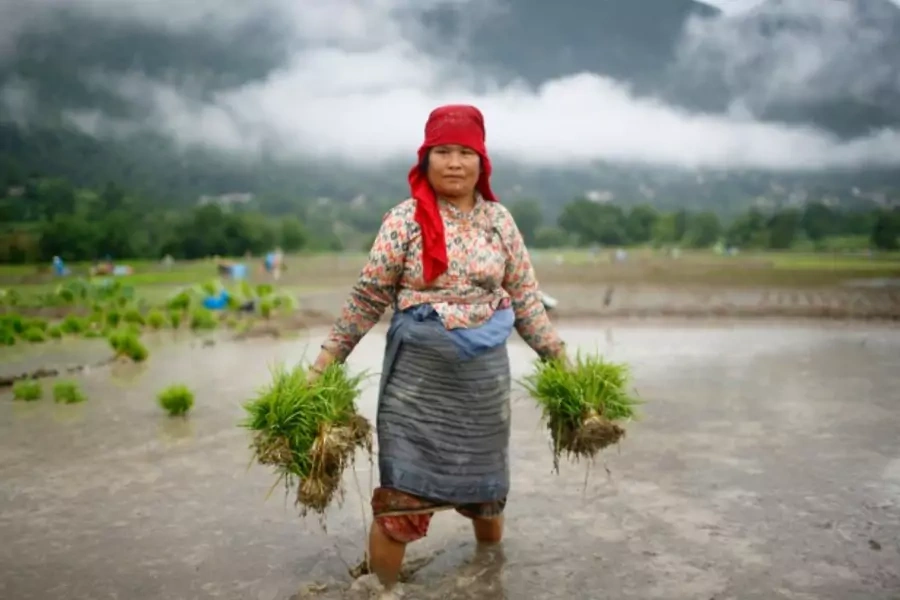Eliminating Poverty and Hunger By Empowering Women

More on:
Food security and hunger eradication are international priorities because of their indisputable positive impact on development goals, local and regional economies, and social stability. Yet despite global attention, nearly 870 million people around the world still do not know where their next meal is coming from. Although this number has fallen by 130 million people since 1990, the decline plateaued after 2008, making clear that new and refined strategies to eliminate world hunger are needed.
Investing in small farms has proven to be one effective method for reducing hunger and malnutrition, especially in developing countries, which are home to ninety-eight percent of the world’s undernourished population. But despite being primary food producers, women farmers are often unable to access the same resources and training that their male counterparts enjoy. Social and economic barriers keep women farmers from reaching their full agricultural production potential, and these obstacles represent a loss for their families and communities. Hunger and malnutrition disproportionately affect girls and women, who comprise sixty percent of the world’s undernourished population.
When they have access to the same resources as male farmers, female farmers are just as productive. The World Bank’s 2012 World Development Report on Gender Equality and Development found that equalizing resource access between men and women could increase agricultural productivity by 2.5 to four percent in developing countries. For example, in Malawi and Ghana, giving women farmers the same resources as men increased maize production by more than fifteen percent, and in Burkina Faso, simply reallocating fertilizer and labor to women resulted in a six percent production gain.
A July 2013 report released by the Asian Development Bank (ADB), Gender Equality and Food Security – Women’s Empowerment as a Tool against Hunger, found a strong relationship between gender-based discrimination and household and individual access to food. The report recommends strategies “that cut across sectors, support women’s collectives, and adopt a rights-based approach in order to improve accountability and encourage independent monitoring of progress. National strategies should be developed in a participatory fashion, involving women in particular, but incorporating appropriate participation of men.”
The ADB report is the most recent of many studies with similar findings. According to the World Food Programme, the staggering number of hungry people could be reduced by up to 150 million if women farmers had access to the agricultural resources and services they need to run their farms. Organizations such as the Food and Agriculture Organization of the UN (FAO) and the World Bank, as well as international conventions, such as Rio+ 20 and the World Economic Forum, have all reached the same conclusion: investing in women farmers is one of the most effective strategies for reducing extreme poverty and hunger.
With mounting evidence that gender-equality is necessary for sustainable food security, closing the gender gap is more important than ever. As they write the post-2015 development framework, international policymakers receive a steady stream of data showing that empowering women with resources and skills to contribute to agriculture production will not only help to eliminate world hunger, but will also enable women and children to be more healthy and productive members of society.
When girls have sufficient nutrition, they can go to school and perform at their maximum potential, both in class and in their communities. Research shows that for every year a girl stays in school, her future wages can increase up to twenty percent. She is more likely to get married later, delaying pregnancy and improving the chance that she and her newborn survive. An educated girl is also more likely to make sure her children are vaccinated, nourished, and educated, and is more likely to earn an income to help support her family. The positive effects of investing in women’s empowerment build on one another, and multiply.
More on:
 Online Store
Online Store